Potřebujeme váš souhlas k využití jednotlivých dat, aby se vám mimo jiné mohly ukazovat informace týkající se vašich zájmů. Souhlas udělíte kliknutím na tlačítko „OK“.
ASTM E1970-11
Standard Practice for Statistical Treatment of Thermoanalytical Data
Automaticky přeložený název:
Standardní praktiky pro statistické zpracování dat termoanalytických
NORMA vydána dne 1.8.2011
Informace o normě:
Označení normy: ASTM E1970-11
Poznámka: NEPLATNÁ
Datum vydání normy: 1.8.2011
Kód zboží: NS-43784
Počet stran: 4
Přibližná hmotnost: 12 g (0.03 liber)
Země: Americká technická norma
Kategorie: Technické normy ASTM
Kategorie - podobné normy:
Anotace textu normy ASTM E1970-11 :
Keywords:
intercept, mean, precision, relative standard deviation, slope, standard deviation, Thermoanalytical data, Intercept, Precision--test methods, Relative standard deviation, Standard deviation, Thermal analysis (TA), ICS Number Code 03.120.30 (Application of statistical methods), 17.200.10 (Heat. Calorimetry)
Doplňující informace
| Significance and Use | ||||||||||||
|
The standard deviation, or one of its derivatives, such as relative standard deviation or pooled standard deviation, derived from this practice, provides an estimate of precision in a measured value. Such results are ordinarily expressed as the mean value ± the standard deviation, that is, X ± s. If the measured values are, in the statistical sense, “normally” distributed about their mean, then the meaning of the standard deviation is that there is a 67 % chance, that is 2 in 3, that a given value will lie within the range of ± one standard deviation of the mean value. Similarly, there is a 95 % chance, that is 19 in 20, that a given value will lie within the range of ± two standard deviations of the mean. The two standard deviation range is sometimes used as a test for outlying measurements. The calculation of precision in the slope and intercept of a line, derived from experimental data, commonly is required in the determination of kinetic parameters, vapor pressure or enthalpy of vaporization. This practice describes how to obtain these and other statistically derived values associated with measurements by thermal analysis. |
||||||||||||
| 1. Scope | ||||||||||||
|
1.1 This practice details the statistical data treatment used in some thermal analysis methods. 1.2 The method describes the commonly encountered statistical tools of the mean, standard derivation, relative standard deviation, pooled standard deviation, pooled relative standard deviation and the best fit to a straight line, all calculations encountered in thermal analysis methods. 1.3 Some thermal analysis methods derive the analytical value from the slope or intercept of a best fit straight line assigned to three or more sets of data pairs. Such methods may require an estimation of the precision in the determined slope or intercept. The determination of this precision is not a common statistical tool. This practice details the process for obtaining such information about precision. 1.4 There are no ISO methods equivalent to this practice. |
||||||||||||
| 2. Referenced Documents | ||||||||||||
|
Podobné normy:
Historická
1.10.2008
Historická
1.3.2013
Historická
1.3.2013
Historická
1.4.2013
Historická
1.6.2012
Historická
1.4.2013
Doporučujeme:
EviZak - všechny zákony včetně jejich evidence na jednom místě
Poskytování aktuálních informací o legislativních předpisech vyhlášených ve Sbírce zákonů od roku 1945.
Aktualizace 2x v měsíci !
Chcete vědět více informací? Podívejte se na tuto stránku.


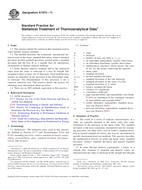
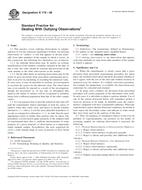 ASTM E178-08
ASTM E178-08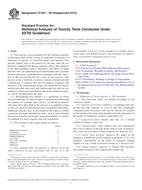 ASTM E1847-96(2013)..
ASTM E1847-96(2013)..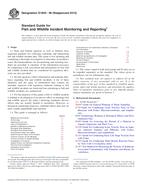 ASTM E1849-96(2013)..
ASTM E1849-96(2013)..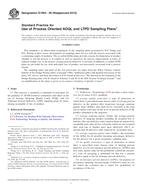 ASTM E1994-09(2013)..
ASTM E1994-09(2013)..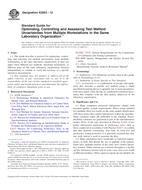 ASTM E2093-12
ASTM E2093-12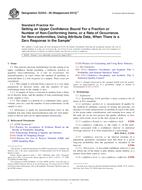 ASTM E2334-09(2013)e..
ASTM E2334-09(2013)e..
 Cookies
Cookies
